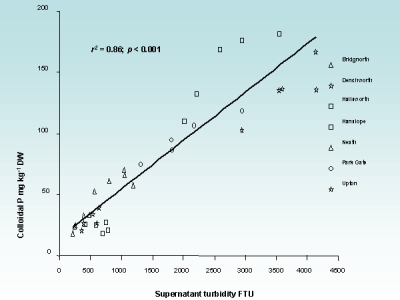Phosphorus Transfer in Grassland Hydrological Pathways
Colloidal Organic Matter &
Phosphorus Transfer in Grassland Hydrological Pathways
Cost: £207k
Duration: 1997-2000
Project Overview
Publications
Overview
This £207k project (1997-2000) funded by BBSRC, showed that livestock derived organic matter (LOM) contributes to phosphorus (P) transfers that were greater than have been estimated previously, with potential implications for water quality degradation and eutrophication.
Prior to undertaking this research, estimates of the P transfer rates from grassland soils were of the order 2 to 3 kg P per ha per year. The research conducted in this project showed that:
- P losses of this order can occur in only a few hours, when LOM combines with certain hydrological circumstances
- colloids of LOM-derived material are the main carriers of P.

Schematic diagram showing the size range of colloids and the 0.45 micron divide commonly used to distinguish "dissolved" from "particulate" phosphorus.
A conceptual model was developed that describes P transfer occurring in three modes:
- solubilisation and leaching of P
- physical detachment of soil particles with P attached
- incidental transfers of particle, colloid and soluble P when P sources and hydrological conditions are combined.

Relationship between colloidal phosphorus and turbidity for a range of UK agricultural soils (after Heathwaite et al., 2005, J. Environmental Quality).
The project was collaborative with the Institute for Grassland and Environmental Research (IGER), and was led jointly by Dr Phil Haygarth (IGER) and Professor Louise Heathwaite.